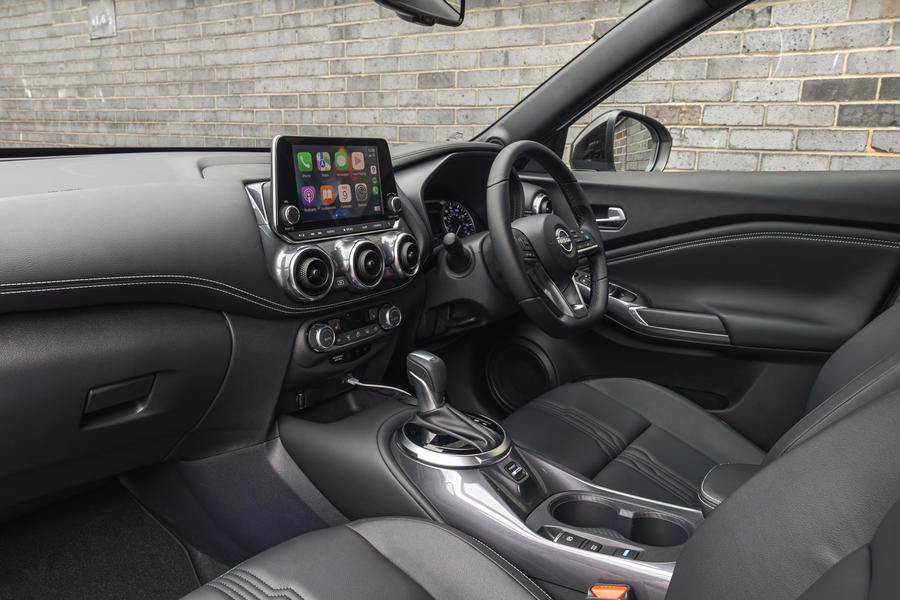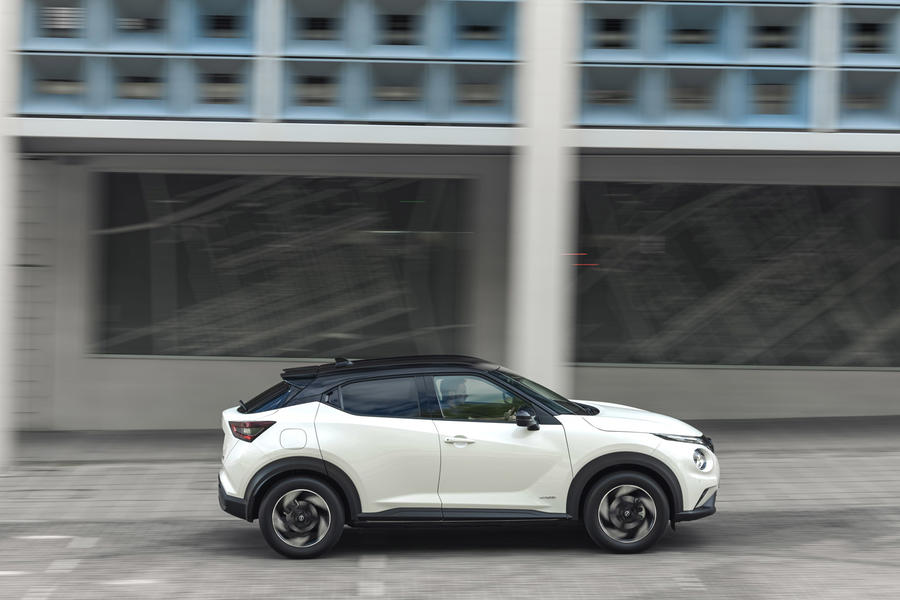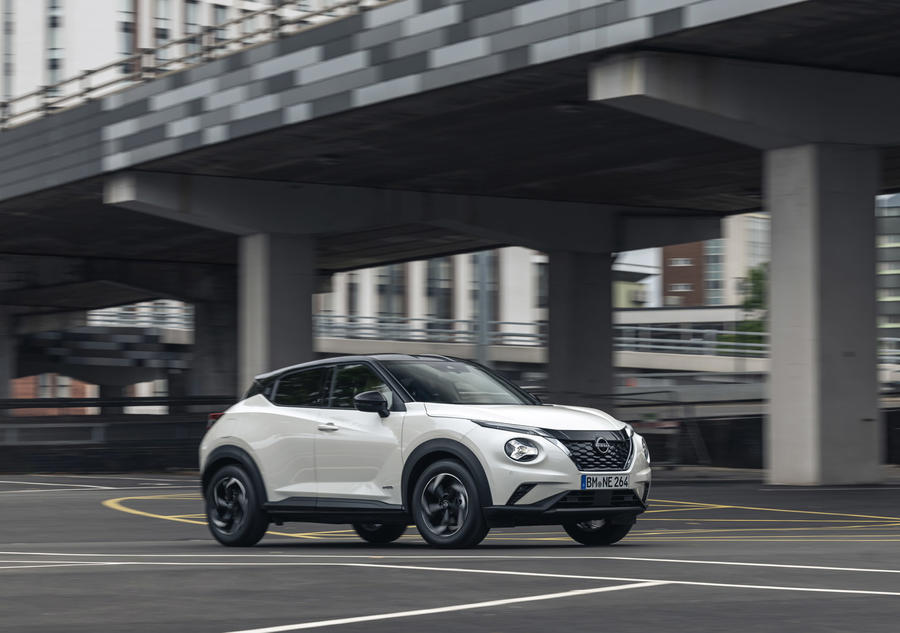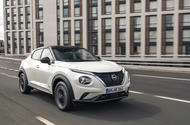Renault’s hybrid tech comes to Nissan’s small crossover
The Renault Nissan Alliance is alive and well, it seems. The upcoming Renault Kadjar replacement will be based on the Nissan Qashqai, and now Nissan benefits from Renault’s unusual E-Tech hybrid powertrain to electrify the Nissan Juke.
The new Juke Hybrid is thus powered by the novel combination of what is essentially a four-speed unsynchronised dog ’box with a 48bhp electric drive motor, a 20bhp starter-generator and a 93bhp naturally aspirated 1.6-litre engine. That equates to a system output of 141bhp.
Nissan would have you believe that its hybrids give drivers the “EV feeling”, but without the downsides. The Juke doesn’t. It feels like a hybrid, although thankfully a reasonably accomplished one.

In practice, the driver is usually kept at arm’s length from what the powertrain is doing. As in the Renaults, there is no tachometer and no manual control of the gears. You just put it in Drive and, most of the time, the software does a decent job of keeping everything on the boil.
We’ve previously observed that this system doesn’t quite feel its 141bhp. That’s a bit of an issue in something like the Renault Arkana, but in a smaller, lighter car like the Renault Clio E-Tech or the Juke, it works quite well, making it feel torquier and more effortless than the 1.0-litre engine in the standard Juke.
It’s no dynamic wonder, though. Under higher loads, the engine starts mooing a bit and takes a second too long to come back down after you’ve eased off the throttle, but it’s muffled well enough not to become tiresome. It avoids the ‘elastic band’ feeling of the CVT-like systems that Toyota and Honda use, but if you’re looking for anything you might describe as fun to drive, we’d suggest you ignore all of the hybrid options anyway.
The chassis certainly hasn’t suffered: it’s on the firmer end of the crossover class, but rarely becomes crashy or harsh. Having driven cars with 17in and 19in wheels back to back, the impact of potholes can be felt slightly more vividly with the larger wheels, but it’s not night and day.
At the same time, Nissan has taken the opportunity to make some visual tweaks for the whole Juke range. There are redesigned bumpers, different wheel options, a new rear spoiler and improved audio and keyless entry systems. You’ll recognise the hybrid from the partially blanked-off grille.
It would also have been a good opportunity to upgrade the infotainment system to the more modern one used in the latest Nissan Qashqais and the upcoming Nissan Ariya, but the Juke retains the slightly dated but mostly inoffensive 8.0in screen it had previously.
The rest of the interior remains the same as well, save for the 68 litres of boot space that have been sacrificed to the hybrid battery. At 356 litres, it’s still bigger than the Renault Captur Hybrid and on a par with the Toyota Yaris Cross, while rear-seat space is more generous than in both of the Juke’s hybrid rivals.

The raison d’être for any hybrid is improved fuel economy. On the one hand, an extra 10mpg on the combined cycle from a punchier powertrain seems like a fair deal. On the other hand, while the 44mpg we saw on our test drive is a decent improvement over the 37.8mpg we achieved when we road tested a standard Juke, it’s some way short of the 60mpg a Toyota Yaris Cross can return.
Prices for the Nissan Juke Hybrid start at £27,250, as it’s only available as an N-Connecta grade and up. That’s the middle trim level for the normal Juke. Like for like, the hybrid costs £1500 more than an equivalent 1.0-litre automatic Juke and £3200 more than the manual. Add it all up, and it’s a hefty £6830 more than the cheapest Juke. That also makes it marginally more expensive than an equivalent Yaris Cross.
The hybrid is a worthy addition to the Juke range, because it brings some flexibility and economy to the powertrain while preserving the interior space and ambience, as well as the tidy road manners. Its efficiency is ultimately disappointing and the price could prove slightly too ambitious.

Source: Autocar
